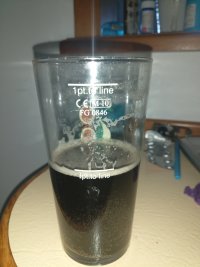I'm going to try my next English style ale(s) with somethign other than MO for the base malt. I have always loved MO, I think, but lately I'm not so sure. I have been getting a... rye sort of flavor, maybe peanuts out of my beers and I'm getting tired of it. I dropped the Victory from the last brew thinking that was it, but it didn't make a difference there.
Seems like a good place to ask if I'm the only one? I'd normally appreciate "nutty" but lately it's become distracting. I love crunching on a few grain kernels just before mash-in but I'm starting to lose favor with the final product.
(I think perhaps it was
@DBhomebrew mentioned this in another thread and gave me an a-ha moment).
Which maltster's MO are you using? I'm a fan of Warminster, not only because it is cheaper than either Simpson's or Crisp, but because it doesn't get quite as heavy at higher gravities. I think Simpson's and Crisp are designed to throw a lot of flavor into ~1.040 beers...and that can get to be a bit much when you start elevating beyond their 1.040 sweet spot.
Myself, I tend to stick to the 1.040-1.055 pocket and I find Warminster performs great within that gravity range. Around 1.050, and depending upon the style, I sometimes find it useful to reinforce it with 4oz of UK amber malt, or a pound of Breiss' Ashbourne Mild Malt--why can't we get UK mild malt in the States?! Dark Munich will work, in a pinch.
Lastly, consider your mash schedule. The longer I've brewed UK ales, the lower and more aggressive my mash schedules have become. Orthodoxy suggests that you should be doing a single rest at ~154F, but I've found that 145F for an hour, followed by a recirculation run at 158 for 30mins yields a satisfying, but as the Belgians would say, "digestible" beer.
That's going to make an overly thin beer, right? The trick, at least to my mind, is in how you treat your kegs. Carb them low, but amp up the gas for serving. When you're done, use the PRV to release your serving gas. Don't store your kegs on the gas. Learn the cellarmanship that makes the most of your beers.
That's what I think about this for now, a year from now I'll look back on this post with shame. And that's why I love UK ales so much. I'm always learning.
Edit: Also, who says you have to use MO as the entirety of your base malt grist? As Ron Pattinson has made clear, UK pale malt was frequently rivaled by, if not surpassed by, N. American malt, often 6-row. Feel free to use US 2-row or Continental malts to finesse your grain bill. You're not obligated to make your UK ales out of UK malts!





































![Craft A Brew - Safale BE-256 Yeast - Fermentis - Belgian Ale Dry Yeast - For Belgian & Strong Ales - Ingredients for Home Brewing - Beer Making Supplies - [3 Pack]](https://m.media-amazon.com/images/I/51bcKEwQmWL._SL500_.jpg)















